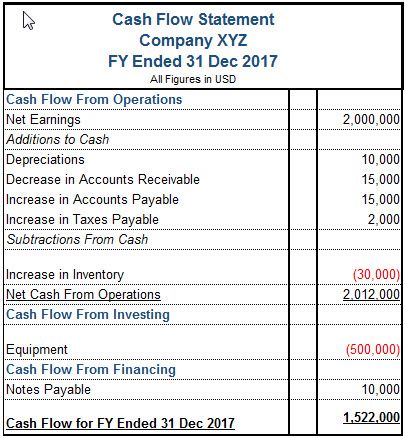
Besides his extensive derivative trading expertise, Adam is an expert in economics and behavioral finance. Adam received his master’s in economics from The New School for Social Research and his Ph.D. from the University of Wisconsin-Madison in sociology. He is a CFA charterholder as well as holding FINRA Series 7, 55 & 63 licenses. He currently researches and teaches economic sociology and the social studies of finance at the Hebrew University in Jerusalem.
Sign up for latest finance stories
Sometimes, businesses offer such credit to frequent or special customers, who receive carrying value how to calculate carrying value definition formula periodic invoices rather than having to make payments as each transaction occurs. In other cases, businesses routinely offer all of their clients the ability to pay within some reasonable period after receiving the products or services. This is because AR represents money that is owed to a company by its clients and therefore has the potential to generate cash flow when the payment is received.
Metrics Used in Accounts Receivable Management

This involves implementing transparent invoicing procedures, streamlined payment tracking, timely collections, regular reconciliations, stringent credit evaluations, and efficient payment processes. In recent years, the use of accounting software for managing financial processes has grown in importance. This software facilitates the seamless handling of various accounting tasks, including journal entries and maintenance of the general ledger. By effectively integrating technology into accounts receivable management, businesses can expedite cash flow, reduce human errors, and improve overall efficiency.
DSO can vary significantly across industries and businesses, so it’s essential to consider context when interpreting this metric. It is also crucial to track DSO examples of variable overhead costs over time and compare it against industry benchmarks to assess a company’s performance. The easiest way to deal with this is to write off the debt as uncollectable.
Diversify Payment Options
- Similarly, well-defined accounts receivable (AR) collection policies enable a proactive approach to addressing overdue accounts and streamlining workflows.
- To illustrate, Company A cleans Company B’s carpets and sends a bill for the services.
- Centralize project documentation and include essential information with invoices to reduce disputes, streamline payments, and improve customer service.
- By utilizing tools like an aging schedule and implementing a systematic collections process, businesses can better manage their receivables, ensuring timely payments and strong cash flow.
- Quality should encompass not only the products or services you provide but also the quality of customer interactions at every stage of engagement.
A typical aging schedule groups invoices by their number of days outstanding, such as 0-30 days, days, days, and over 90 days. Accounts receivable represents money owed to a business for goods or services sold. Accounts payable is money a business owes to suppliers for goods or services purchased.
Businesses that have accounts receivable, which is most, do so because they the proper timing of workers’ compensation deductions have extended credit to their customers. Providing multiple payment options allows customers to remit with their choice method, giving them fewer excuses for failing to pay. To calculate CEI, add your beginning receivables and monthly credit sales, then subtract ending total receivables. Then divide that by the sum of beginning receivables and monthly credit sales, minus ending current receivables. Finally, optimized AR management creates a more efficient accounting team focused on strategic initiatives rather than administrative duties.
Join the 50,000 accounts receivable professionals already getting our insights, best practices, and stories every month. Marshall Hargrave is a financial writer with over 15 years of expertise spanning the finance and investing fields. He has experience as an editor for Investopedia and has worked with the likes of the Consumer Bankers Association and National Venture Capital Association. Marshall is a former Securities & Exchange Commission-registered investment adviser and holds a Bachelor’s degree in finance from Appalachian State University. To fully understand the process, you need to be familiar with all the steps, which we will cover in detail in the ‘Accounts Receivable Process Steps’ section.
By managing accounts receivable effectively, a company can maintain a stable cash flow while reducing the likelihood of bad debts. Efficient AR management calls for companies to enforce credit policies, perform periodic credit evaluations for customers, and follow up on overdue invoices promptly. The accounts receivable turnover ratio is an essential KPI that measures how efficiently a company collects payments from its clients. It is calculated by dividing the net credit sales by the average accounts receivable.
Automating your accounts receivable can also help reduce the administrative burden of managing it, such as sending automated reminders, invoicing, and tracking payments. SugarCRM provides flexible automation solutions for the management of accounts receivable. Covering invoicing, payment tracking, and customer communication, SugarCRM adapts to the unique needs of businesses. Its open-source architecture allows for customization, making it suitable for businesses with specific requirements. Freshsales combines a user-friendly interface with robust accounts receivable management tools.
Effective accounts receivable management involves managing and tracking outstanding customer invoices and ensuring timely payment collection. Maintaining positive cash flow is always important, but even more in times of economic volatility, company growth, or unexpected events. Poor management of accounts receivables refers to the various operation and financial issues of business that impact the receivables management efficiency . Some of the common drivers are late invoices, higher DSO, data discrepancies, inadequate credit checks, time consuming manual processes, etc.